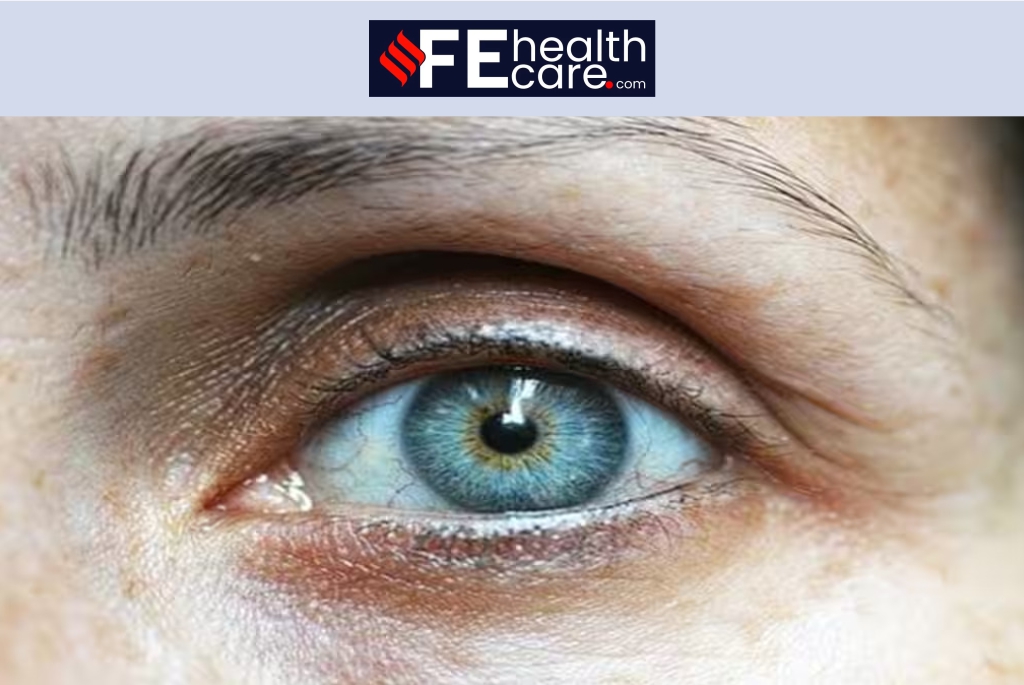The Urgent Need to Prioritise Eye Health
News and Media

Employees’ reduced efficiency can have far-reaching consequences for businesses striving to maintain a competitive edge in today’s technology-driven landscape.
By Padma Shri Awardee Prof. (Dr.) Mahipal S. Sachdev and Suchintan Chatterjee
In an era dominated by screens, our average screen time has doubled to 7–8 hours daily. As a result, eye conditions, such as digital eye strain and computer vision syndrome, are becoming more pronounced than ever. These conditions are characterised by redness, itching, headaches, and fatigue, posing significant challenges to workplace productivity and overall safety.
A startling 65 percent employees suffer from eye strain and vision problems and 47 percent reported headaches and fatigue. The digital eye strain epidemic is a global issue, and 70 million individuals are at risk of developing computer vision syndrome. The implications of digital eye strain and computer vision syndrome extend beyond mere discomfort. As the symptoms intensify, professionals find their productivity compromised, making it challenging to focus on work. Employees’ reduced efficiency can have far-reaching consequences for businesses striving to maintain a competitive edge in today’s technology-driven landscape.
Investing in employee well-being
At present, corporates are grappling with the challenge of balancing employees’ well-being against the economic burden of rising medical expenses (as healthcare costs rise). With a staggering 15 percent medical inflation rate compared to the moderate 6–7 percent overall inflation rate, businesses have responded by increasing their spending on employee benefits. Spending on employee benefits with enhanced health care coverage, wellness programmes, and preventive check-ups is becoming a key component of the corporate benefits package. Despite these increased efforts from corporates, the eye remains an under-covered area in overall programmes and insurance coverage.
The call for an increase in focus
Scrutinising the comprehensive nature of health care coverage, particularly eye health, is essential.
Burst the myth around eye tests:
One of the key areas often under-addressed is the comprehensive eye check-up, which extends beyond the routine eye tests. Comprehensive eye check-ups, which may take 3–4 hours, are typically not conducted regularly and deferred until eye issues escalate.
Include comprehensive eye tests as part of periodic preventive health check-ups:
Eye check-ups are usually not included as part of the full body check-up. This downplays the significance of eye health and reinforces the reactive rather than proactive approach to vision care.
Navigate the insurance maze:
As corporates continue to invest significantly in employee benefits and insurance policies, optimising spending and enabling maximised benefits become imperative. Comprehensive coverage is a cornerstone of employee well-being. These benefits are not effective due to limited awareness, age-old policy terms, and lack of clarity related to the inclusion of today’s need-based relevant medical technologies.
In the past few years, developed nations have witnessed significant strides in enhancing healthcare benefits, particularly in the realm of eye care. India faces a considerable challenge with cataract surgeries, representing 91 percent of all eye-related procedures and contributing 62 percent to blindness cases. Recognising the critical need for comprehensive offerings related to cataract, insurance companies play a pivotal role in bridging the gap between patient needs and accessible care.
At present, the age-old Monofocal Intraocular Lens (IOL) is a predominant choice for cataract patients in India. It covers only distance vision and the package cost is between Rs 25,000 and Rs 40,000 per eye. However, patients face difficulties in daily activities, such as chopping vegetables, shaving, climbing stairs, or working on a computer; all of these predominantly occur at intermediate distance levels. Due to the limitations of this option, the Monofocal Plus Intraocular Lens (IOL) is introduced to cover the intermediate distance. Beyond optical benefits, Monofocal Plus Intraocular Lens (IOL) has demonstrated the potential to reduce the risk of falls and accidents. It is particularly relevant in countries such as India where a 31 percent fall rate amongst the elderly leads to multiple injuries. The incremental cost of this innovative lens is Rs 10,000. However, limited awareness and ambiguous policy terms hinder its widespread adoption.
Furthermore, insurance companies in developed nations have expanded their coverage to include advancements in eye care technology, such as robotic and laser surgery. These methods may be more expensive than the traditional approaches and offer higher precision and shorter recovery times. Insurance companies in developed nations have included retinal injections in coverage, marking a significant step forward in ensuring the well-being of individuals in need of eye-related medical interventions. In India, the insurance sector’s ambiguity around embracing such advancements persists, hindering awareness and utilisation. The industry must adapt to modern technologies, ensuring policies align with the changing needs of the workforce.
Promoting regular eye check-ups and fostering awareness related to innovative lens options can significantly contribute towards maintaining optimal eye health. Encouraging individuals to ask the right questions and make informed choices related to their lenses facilitates better outcomes and a heightened quality of life.
The need for change
It is time for a paradigm shift in corporate approaches towards eye health. Corporates are the primary enablers of quality healthcare and must demand the right benefits for their employees. Focussing on eye health contributes to the overall well-being of employees and enhances workplace productivity.
Corporate spending on employee benefits and insurance is a positive step towards promoting well-being. Ensuring that these policies evolve with the dynamic landscape of medical technology, is essential.
Corporates can fulfil their commitment to employee well-being and empower their workforce to embrace the most relevant and cutting-edge treatments. They can achieve this by defining precise terms and explicitly including the latest advancements in healthcare. In doing so, businesses contribute towards a culture of health, innovation, and resilience amongst their employees.
(The authors: Padma Shri Awardee Prof. (Dr.) Mahipal S. Sachdev is the Chairman and Medial Director at Centre for Sight – Group Of Eye Hospitals. & Suchintan Chatterjee is a Financial Services Partner – Deloitte India.)
Source: financialexpress.com/healthcare/
